Legal Document Management Workflow
In an era where efficient document management is paramount, this blog presents a comprehensive guide on simplifying your document workflow. The six key steps highlighted are crucial for achieving an organized and user-friendly system.
The following six essential steps will help you create a modern, efficient document management workflow tailored to your law firm’s evolving requirements. These steps together form a solid foundation for optimizing your document management, ensuring you stay in control of your data and maintain a high level of user satisfaction.
Written by Knowledge Team, posted on November 19, 2023
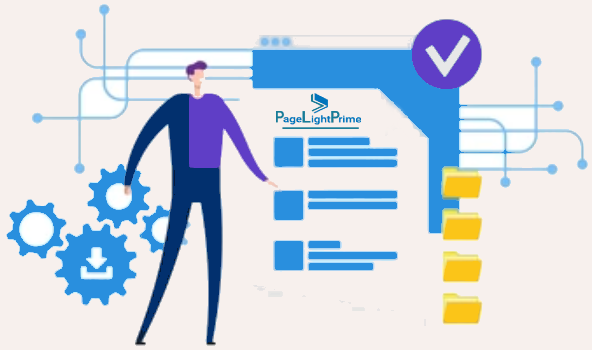
Section 1: Choose the Right Tools
The foundation of a simple and user-friendly legal document management workflow begins with selecting the appropriate tools for the job. Identifying the right legal document management software makes a significant difference in streamlining your processes. In this section, we’ll explore the essential considerations when choosing the right tools for your specific needs.
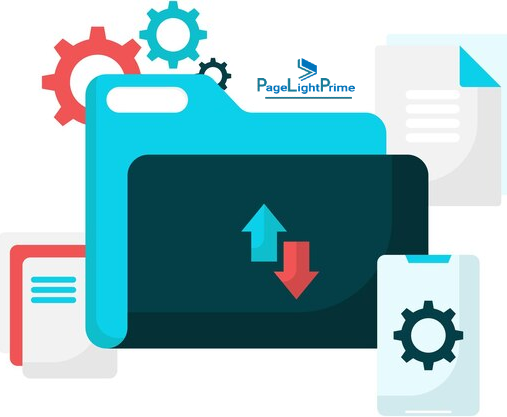
Assess Your Requirements
Start by understanding your organization’s unique document management needs. Consider factors such as your budget, industry, and team size. Are you a small business looking for cost-effective solutions, or a large enterprise requiring scalability? Clearly defining your requirements will help you narrow down your options.
Document Types and Formats
Different businesses deal with various types of documents and formats. Some may primarily work with text documents, while others require support for images, spreadsheets, or even multimedia files. Ensure that the chosen tool can handle the specific document types and formats that are crucial to your operations.
Security Considerations
Document security is paramount. Look for tools that offer robust security features to protect your sensitive information. Features like encryption, access controls, and audit trails can provide the necessary protection for your documents. Make sure that the software complies with industry regulations if applicable.
Integration Capabilities
A truly user-friendly document management system seamlessly integrates with other tools and systems you use daily. Integration with email, cloud storage solutions, project management software, and other essential tools can improve overall efficiency. Before making your decision, check whether the software easily integrates with your existing tech stack.

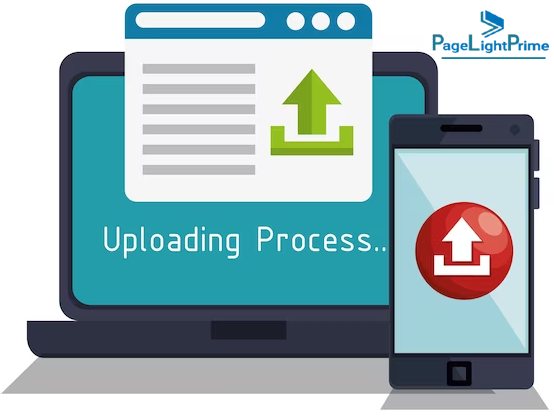
User Experience
A user-friendly interface is key to successful document management. Your team should be able to navigate the software with ease, minimizing the learning curve. Opt for tools that offer intuitive navigation, simple file uploading, and effective search capabilities. User-friendly software increases adoption rates and minimizes frustration.
Scalability
As your business grows, so will your document management needs. Choose a tool that can grow with you. Scalability ensures that you won’t outgrow your document management system, and you won’t have to go through the selection process again in the near future.
By thoroughly considering these factors, you can identify the right tools that align with your organization’s requirements and create a strong foundation for a simplified document management workflow. In the following sections of this blog, we’ll delve deeper into strategies, best practices, and additional tools that will help you optimize your document management processes for enhanced productivity and user satisfaction.
Section 2: Establish Clear Naming Conventions
Once you’ve selected the right tools for your document management workflow, the next crucial step is to establish clear and consistent naming conventions for your documents. Effective naming conventions are like the road signs that guide you through your matter folders, ensuring that you can easily find, categorize, and manage your files. In this section, we’ll delve into the importance of naming conventions and provide guidelines for creating them.
Why Naming Conventions Matter
Naming conventions serve as a foundational element of an organized document management system. Here’s why they are essential:
Preventing Duplication
A well-defined naming convention helps prevent duplicate files. When team members know how to name documents, they are less likely to create multiple versions with slightly different names, reducing clutter and confusion.
Simplifying Retrieval
When everyone follows the same naming rules, finding documents becomes a breeze. You can quickly search for and retrieve the right file based on specific attributes like date, author, project, or status.
Enhancing Collaboration
Consistent naming conventions make it easier for team members to understand and work with each other’s files. This is especially valuable when multiple people collaborate on the same project or when new team members join the workflow.
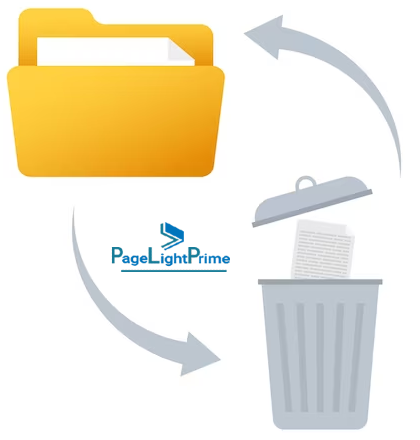
Guidelines for Effective Naming Conventions
To create naming conventions that truly simplify your document management workflow, consider the following guidelines:
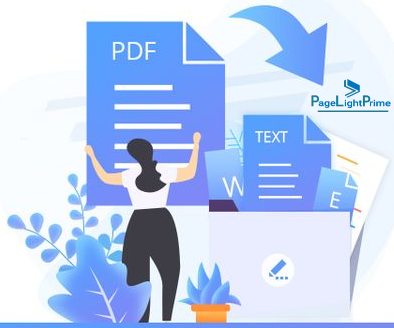
Descriptive and Consistent Names
Choose names that accurately describe the content of the document. A clear, concise title will make it easy for users to understand the document’s purpose. Consistency is key – ensure that everyone adheres to the same format.
Avoid Spaces and Special Characters
Spaces and special characters can cause compatibility issues and make documents hard to manage. Instead, use underscores, hyphens, or camelCase to separate words.
Use Prefixes and Suffixes
Incorporate prefixes or suffixes to indicate the document’s version, format, or other important attributes. For instance, you can use “v1,” “v2” to denote document versions, or “.pdf,” “.docx” to specify file formats.
Include Dates
Including creation or modification dates in your naming convention can help you quickly determine the document’s freshness and relevance. It’s particularly useful for files that undergo regular updates.
Standardized Categories
If applicable, include standardized categories such as project names or department codes to further classify your documents. This will help you organize and filter files more effectively.
Document Author
If your workflow involves multiple authors or contributors, consider adding the author’s name or initials to the document’s name. This can be especially helpful for accountability and collaboration.

By following these guidelines and creating clear naming conventions, you’ll establish a structured and organized environment for your documents. This, in turn, simplifies document management, reduces errors, and enhances the overall user experience. In the upcoming sections of this blog, we’ll continue to explore additional strategies and best practices to further streamline your document management workflow.
Using document type and keywords to identify documents can certainly be an effective alternative to or complement to naming conventions. The choice between these methods depends on your specific needs and workflow. Here are some considerations:
Naming Conventions
Pros
- Structured and standardized naming ensures consistency.
- Suitable for documents with specific naming requirements or attributes.
- Helpful for quick visual identification.
Cons
- May require training or discipline to maintain consistency.
- Less flexible for categorizing documents based on multiple attributes.
Document Type and Keywords
Pros
- Offers flexibility to categorize documents using various attributes.
- Keywords can be more descriptive and reflective of content.
- Easier to implement and may not require as strict adherence.
Cons
- May lead to inconsistency in categorization if not well-defined.
- Searching for specific documents may require additional effort.
In practice, many law firms use a combination of these methods. For example, you can employ naming conventions for specific attributes like client, matter and version or date and use keywords or document type for broader categorization. The choice ultimately depends on your organization’s specific needs and the preferences of your team. The key is to have a system in place that makes document retrieval and management efficient and user-friendly.
Section 3: Organize Your Documents Logically
Once you’ve established clear naming conventions, the next critical step in simplifying your document management workflow is to organize your documents logically in a client matter hierarchy. Effective organization ensures that your files are structured and integrated with legal practice management software in a way that makes sense for your attorneys and your support team. In this section, we’ll explore the importance of document organization and provide strategies to help you achieve it.
Why Document Organization Matters
Organizing your documents logically is akin to setting up a well-structured library. It offers several key advantages:
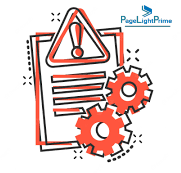
Efficient Retrieval
Logical organization simplifies the process of finding the right document when you need it. Users can navigate through folders, tags, and labels to quickly locate the files they require.
Improved Collaboration
Organized documents facilitate collaboration within teams. Team members can easily identify and access relevant files, promoting efficient teamwork.
Reduced Errors
By categorizing documents appropriately, you reduce the chances of users saving files in the wrong location or overwriting critical information. This minimizes errors and data loss.
Strategies for Logical Document Organization
To create a logical and user-friendly document structure, consider the following strategies:
Folders and Subfolders
Utilize folders and subfolders to group related documents. For example, you might have top-level folders for departments or projects, with subfolders for specific tasks or phases within each.
Tags and Labels
Implement a tagging system to add metadata to your documents. Tags and labels enable cross-referencing, allowing documents to be associated with multiple categories, topics, or attributes.
Metadata
Attach metadata to documents to provide additional context and search criteria. Metadata can include information like document author, creation date, client name, and project number.
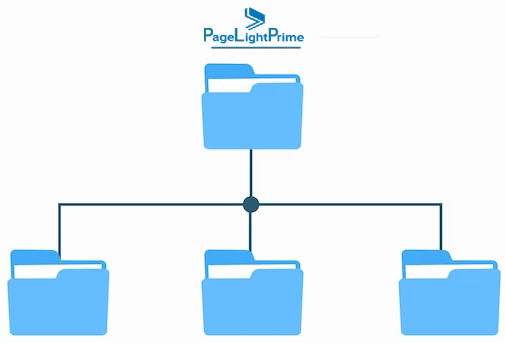
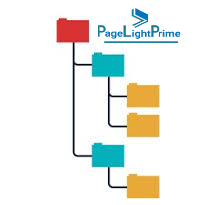
Document Hierarchy
Create a hierarchical structure that reflects your workflow and processes. This helps users understand the relationships between documents, such as drafts, final versions, and archived files.
Permissions and Access Levels
Control access to documents by setting permissions and access levels. Determine who can view, edit, or delete documents, and establish clear rules for managing sensitive information.
Regular Maintenance
Regularly review and update your document organization structure. As your business evolves, so will your document management needs. Adjust the organization to accommodate these changes.
By implementing these strategies, you can create an organized and user-friendly document management system that enhances productivity and collaboration. Logical organization not only simplifies document management but also ensures that your team can make the most of the tools and naming conventions you’ve put in place. In the following sections of this blog, we’ll delve into additional steps and best practices to further streamline your document management workflow.
Section 4: Automate Your Document Tasks
Streamlining your document management workflow to make it even simpler and more efficient involves embracing automation. Automating your document tasks can significantly reduce manual labor, save time, minimize errors, and enhance the overall quality and consistency of your documents. In this section, we’ll explore why automation is essential and provide strategies to implement it effectively.
Why Document Automation Matters
Legal Document Automation is a game-changer for productivity and accuracy. Here’s why it’s crucial:
Time Savings
Repetitive document-related tasks, such as generating reports, converting file formats, or sending notifications, can be time-consuming. Automation frees up valuable time by handling these tasks without human intervention.
Error Reduction
Humans are prone to errors, but automation follows predefined rules and processes consistently. This reduces the likelihood of data entry errors, version mismatches, or other mistakes.
Consistency and Quality
Automation ensures that your documents adhere to specific formatting and quality standards. This is especially important for documents that need to maintain a professional appearance and consistency.

Strategies for Document Automation
To automate your document tasks effectively, consider the following strategies:
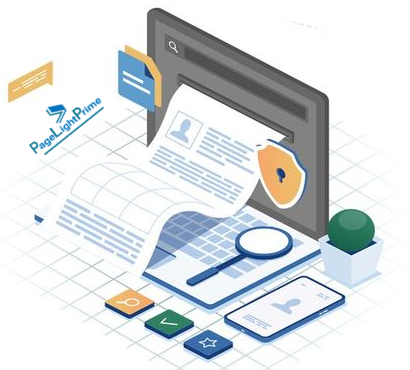
Built-In Document Management Software Features
Many document management solutions offer built-in automation features. These can include workflow templates, approval processes, and scheduled tasks. Take full advantage of these features to automate routine tasks within your chosen software.
External Automation Tools
Leverage external automation tools and platforms like Zapier, IFTTT, or Google Apps Script. These services allow you to create custom workflows and triggers that connect various apps and automate specific document-related actions. For example, you can set up triggers to automatically save email attachments to specific folders or generate reports from data in a spreadsheet.
Document Conversion and Generation Tools
Use specialized tools for document conversion and generation. These tools can automatically convert documents to different formats, create templates, and populate them with data from other sources, saving you time and effort.
Email Notifications and Alerts
Set up automated email notifications and alerts for document-related events. For instance, receive notifications when a document is updated, a new version is uploaded, or when a document requires review or approval.
Data Integration
Automate data integration between different software systems. For example, sync data from your CRM to your document management system to ensure that your documents always contain the most up-to-date information.
Scheduled Tasks
Automate routine document-related tasks on a schedule. For example, you can schedule regular document backups, archiving, or routine maintenance tasks to keep your document management system in top shape.

Implementing document automation will not only simplify your workflow but also enhance the efficiency and accuracy of your document management processes. As technology continues to advance, embracing automation becomes increasingly important in managing your documents effectively. In the following sections of this blog, we’ll continue to explore additional steps and best practices for further optimizing your document management workflow.
Section 5: Review and Update Your Documents Regularly
An often overlooked but essential aspect of simplifying your document management workflow is to establish a process for regular document review and updates. Keeping your documents accurate, relevant, and compliant with standards and regulations is crucial to avoid potential issues and maintain the integrity of your document repository. In this section, we’ll discuss the significance of document review and updates and provide strategies to implement them effectively.
Why Regular Document Review and Updates Matter
Regular document review and updates offer several advantages that contribute to a smoother document management workflow:
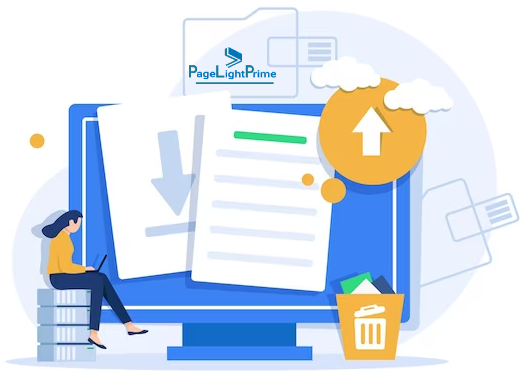
Accuracy and Relevance
As your business evolves, so does the information within your documents. Regular reviews ensure that your documents reflect the most up-to-date and accurate data. Outdated information can lead to confusion, errors, and poor decision-making.
Compliance
Industries and regulatory requirements change over time. Regular reviews help you identify and address compliance issues to avoid legal or ethical problems. It’s crucial to ensure your documents meet current industry standards and legal obligations.
Efficiency
Outdated or redundant documents can clutter your repository and slow down the search process. Regular purges or updates help maintain an organized and efficient document management system.
Strategies for Regular Document Review and Updates
To ensure your documents remain accurate and compliant, consider the following strategies for implementing regular review and updates:
Establish a Review Schedule
Set a schedule for document reviews. The frequency of reviews can vary depending on document type and importance. For instance, critical documents might require quarterly or annual reviews, while less critical documents could be reviewed less frequently.
Designate Responsibility
Assign responsibility for document reviews to specific team members or departments. Clearly define roles and expectations to ensure that the review process is consistent and thorough.
Version Control
Implement version control to track changes and updates to your documents. This ensures that you can monitor document history and roll back to previous versions if necessary. Version control helps maintain a clear record of document changes.
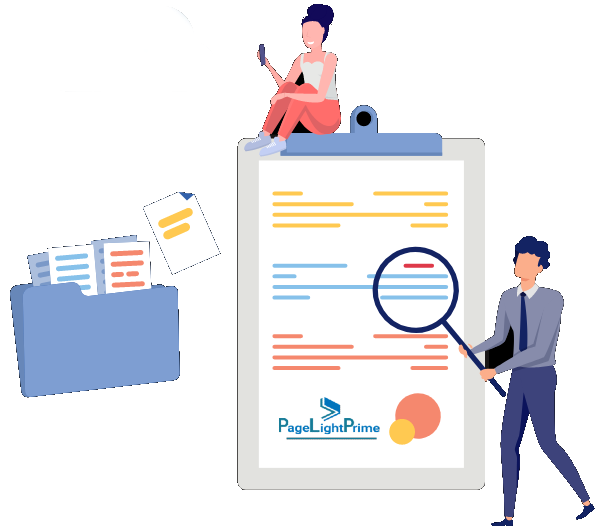

Audit Trails
Use audit trails to record all actions taken on a document, such as who accessed it, when changes were made, and what modifications were performed. Audit trails provide accountability and transparency in your document management process.
Feedback and Collaboration
Encourage team members to provide feedback on document content and structure. Collaborative reviews can identify areas for improvement and help you maintain high-quality documents.
Document Retention Policies
Develop and enforce document retention policies that specify when documents should be archived, deleted, or updated. These policies help you manage document life cycles effectively.
Compliance Checks
Regularly review documents to ensure they comply with industry regulations, internal standards, and best practices. If changes are required, prioritize updates to address compliance issues.

By incorporating these strategies, you can ensure that your document repository remains up-to-date, accurate, and compliant with relevant standards and regulations. Regular reviews and updates are essential for maintaining a streamlined and efficient document management workflow. In the following sections of this blog, we’ll continue to explore additional steps and best practices to further enhance your document management processes.
Section 6: Train and Educate Your Users
The last and critical step in simplifying your document management workflow is to invest in Legal DMS training and educating your users. Ensuring that your team understands how to effectively use your document management tools, follow best practices, and adhere to established policies is vital for increased adoption, efficiency, and user satisfaction. In this section, we’ll discuss the importance of user training and education and provide strategies for successful implementation.
Why Training and Education Are Essential
Comprehensive user training and education offer several key benefits that contribute to a smooth and user-friendly document management workflow:

Adoption and Engagement
Proper training increases the likelihood that your team will adopt the document management system and actively engage with it. Users who are confident in their abilities are more likely to utilize the tools effectively.
Mistake Reduction
Education helps users understand the system’s features and best practices, reducing the chances of mistakes, data entry errors, and unintentional policy violations.
Confusion Mitigation
A lack of understanding can lead to confusion and frustration among users. Training and education minimize these issues by providing clarity and guidance.
Policy Adherence
Ensuring that users are aware of your organization’s document management policies and procedures is crucial for compliance, data security, and maintaining a structured workflow.

Strategies for User Training and Education
To ensure that your users are well-prepared to manage documents effectively, consider the following strategies for training and education:

Clear and Comprehensive Instructions
Provide user-friendly guides, manuals, and tutorials to help users understand how to use document management tools. These resources should be easy to follow and readily available.
Interactive Training Sessions
Conduct training sessions, whether in person or virtually, to demonstrate how to navigate the system, perform key tasks, and troubleshoot common issues. Encourage questions and participation.
Online Resources
Create an online repository of training materials, including videos, step-by-step guides, and FAQs. This allows users to access resources at their convenience.
Feedback and Support
Establish a feedback mechanism for users to ask questions and seek assistance. Encourage a culture of continuous learning and improvement.
Regular Updates
Keep your users informed about system updates, new features, and best practices. This helps them stay current and take full advantage of the tools at their disposal.
User Onboarding
Implement a structured onboarding process for new team members to ensure that they quickly grasp the document management system’s fundamentals.
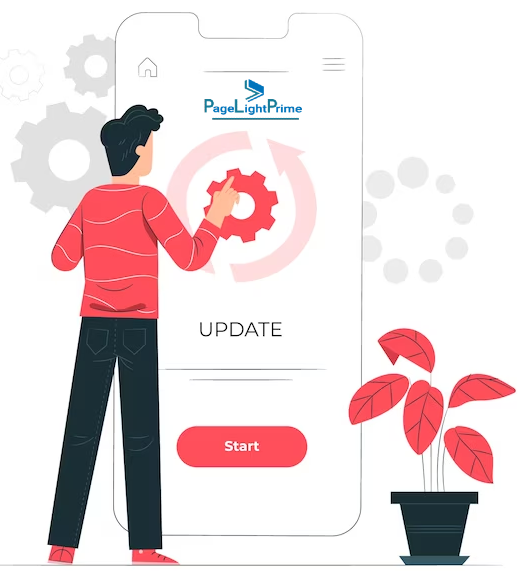

Periodic Refresher Courses
Over time, offer refresher courses to reinforce knowledge and introduce advanced features. This can help users maximize their efficiency and effectiveness.
Promote Policy Awareness
Regularly communicate your organization’s document management policies and guidelines to users. Ensure that they understand the importance of policy adherence.
By implementing these strategies, you can create a well-informed and empowered user base that not only simplifies your document management workflow but also actively contributes to its success. Effective training and education are essential for enhancing user satisfaction and ensuring that your document management system operates smoothly. With these six steps in place, you’ll be well on your way to achieving a simplified and user-friendly document management workflow for your organization.
Section 7: Here’s What Else to Consider
While we’ve covered the essential steps to simplify your document management workflow, there are always additional factors and insights to consider for a truly efficient and user-friendly system. Here are some additional points to ponder:
User Feedback
Continuously gather feedback from your document management system users. Their experiences and suggestions can be invaluable for identifying pain points and opportunities for improvement.
Customization
Depending on your specific needs, you may need to customize your document management tools to better align with your workflows and preferences. Explore the customization options available to tailor the system to your organization.
Scalability
As your business grows, your document management needs will evolve. Ensure that your chosen tools and processes are scalable to accommodate an increasing volume of documents and users.

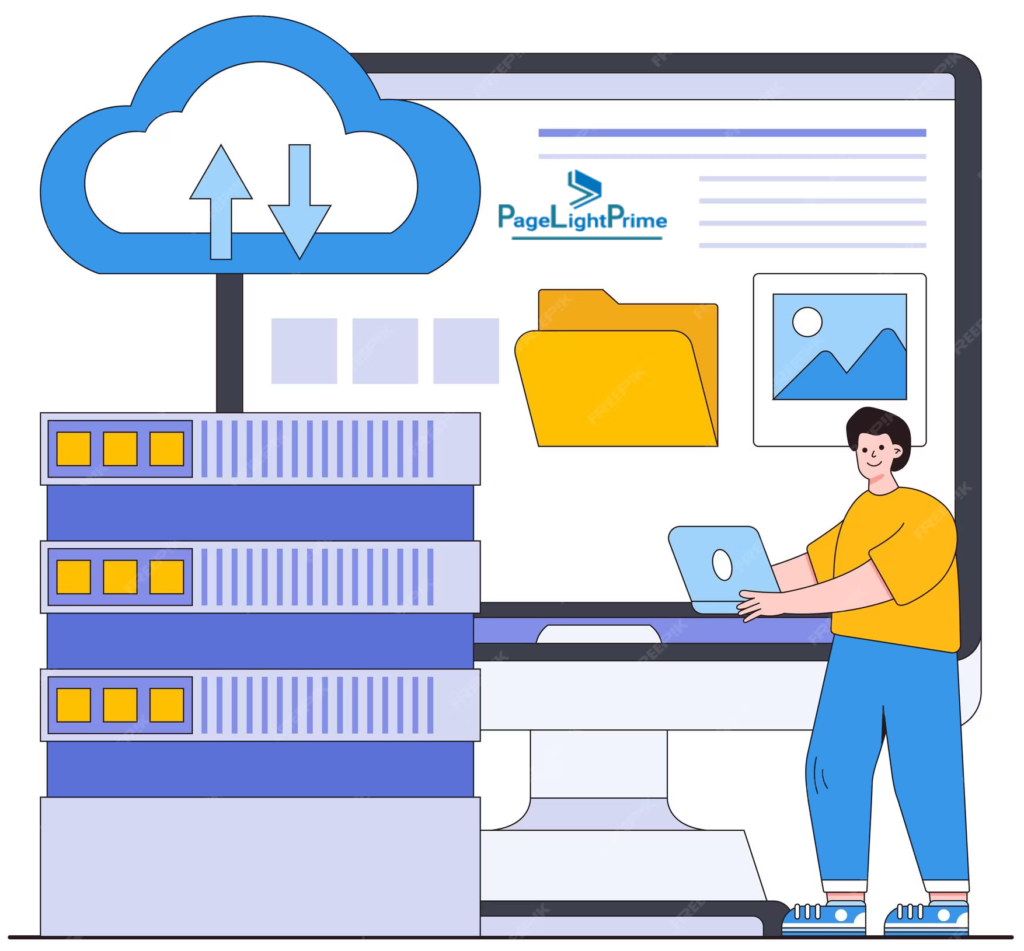
Mobile Accessibility
In an increasingly mobile world, consider how well your document management system functions on mobile devices. Mobile accessibility can be a game-changer for remote work and flexibility.
Data Backups and Disaster Recovery
Implement robust data backup and disaster recovery procedures to safeguard your documents. This ensures that you can recover critical information in case of unforeseen events like hardware failures or cyberattacks.
User Rights and Responsibilities
Clearly define user rights and responsibilities within the document management system. Ensure that users understand their roles in maintaining data security, access controls, and version management.
Continuous Learning
Keep up with industry trends and advancements in document management. Staying informed allows you to adapt to new technologies and best practices, ensuring your system remains competitive and efficient.
Security and Compliance Audits
Regularly conduct security and compliance audits to assess the integrity of your document management system. This can help you identify vulnerabilities and ensure that you’re adhering to relevant regulations.


Legal and E-Discovery Considerations
Depending on your industry, you may need to consider legal and e-discovery requirements. Ensure that your document management system supports legal holds, e-discovery capabilities, and proper archiving of historical documents.
Integration with AI and Automation
Explore the possibilities of integrating artificial intelligence (AI) and automation to further streamline document management. AI-powered data extraction and automated categorization can significantly boost efficiency.
Remember that document management is an evolving field, and it’s essential to adapt to changing technologies and user needs. An agile and adaptable approach will help you stay ahead of the curve and maintain a user-friendly document management workflow that continues to serve your organization’s evolving requirements.
